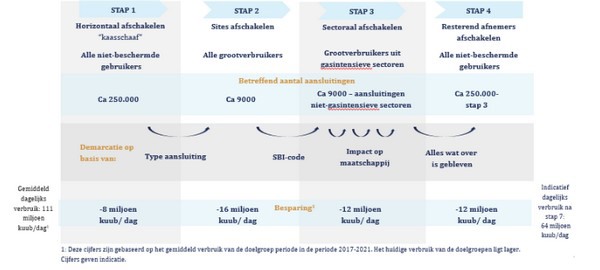On Friday, the 9th of September, Dutch Climate and Energy Minister, Rob Jetten, updated the House of Representatives on the Protect and Restore Gas Plan, which the government is devising. Should the Netherlands unexpectedly have insufficient gas, interventions will follow.
In the event of a gas crisis, the country will first focus on compelling some 250,000 energy-intensive companies to reduce their usage by 20%. Jetten writes about studies showing that cutting the gas supply would have a considerable social impact.
In his letter, the Minister refers to a scenario analysis Gasunie published in mid-July. An update will follow in late September, he writes. In mid-July, Gasunie in, and there that should the Russian gas supply stop entirely, there would not be any gas shortage in the Netherlands in winter. However, there are many ifs and buts.
In phases
If there were to be a shortage, the Protect and Restore Gas plan would kick in. The country is currently in phase one, 'early warning.' The Netherlands is not expected to enter phase two, 'alarm,' any time soon. Phase three, 'emergency,' follows. That, says policymakers, means an imminent gas crisis and shutdowns.
And that would have 'significant social consequences' confirm the studies Jetten cited. Research done this summer used a larger group of customers (250+) than last winter, as well as the connection between sectors.
The government would, thus, prefer to first get some companies to reduce their gas usage by 20%. Then, certain companies within a sector would have to close, and only as a last resort would entire sectors be cut off. This scaling back in each sector would be gradual, according to the draft phase-out plan, which the Dutch newspaper, Financieele Dagblad, reported on too.
It would look like this:

Cut-off strategy
There are four steps to the cut-off strategy, the Minister's letter explains.
- Step 1: The first step is to reduce roughly 20% of the past three months' average seasonally-adjusted consumption. This measure will be imposed on all non-protected customers (who these are, is not fully clarified). The chain impact analysis shows this is possible for virtually all of these clients, with a limited effect on health and safety, social and economic disruption, and energy system stability.
- Step 2: This step targets individual businesses - those with wholesale connections - within sectors. That will allow sectors on limited throughput to continue as long as possible, thus preventing the shutdown of entire parts of value chains. This should limit the impact on health and safety, social and economic disruption, and energy system stability. The government is currently working out the details on how a sectoral reduction target will translate into a company-level switch-off task.
- Step 3: In this step, whole sectors will be cut off. Here, the focus is on customers with extensive user connections and who are active in a gas-intensive sector. That firstly involves sectors that, if cut off, will not disrupt society too much. Sectors will follow in order of social impact. Here again, the effect on health and safety, social and economic disruption, and stability of the energy system are important criteria.
- Step 4: As a final step, the remaining non-protected users, not yet disconnected, will have their gas cut off.
